Upon considering the question of having an environmentally friendly navy, the answer should not lead to an argument over what is more important, a powerful navy or a thriving environment. Instead it should consider how to integrate greener technologies, to optimise and enhance the capabilities of the fleet in its entirety.
This article was submitted to the UK Defence Journal by Ryan Miller, a 5th year student at the University of Strathclyde studying a masters degree in Naval Architecture and High Performance Marine Vehicles. This article was originally written for the UKNEST 2019 scholarship, of which the posed question was ‘Can a blue water navy be green?’. Ryan, as a successful applicant to the scholarship & recipient of the award, offers his take.
Taking inspiration from commercial shipping, naval powers must consider their impact on the environment throughout all aspects of their infrastructure. Not only considering the damaging effects during the vessel’s lifetime, but the prevention of unnecessary pollutants from design through to decommissioning. As clearly shown in the MoD Sustainability Development Strategy, the introduction of green technology is not an inconvenience to the military, but rather teeming with potential. [1]
Consider the buildings in which naval vessels are designed. As a by-product of the need for energy efficient office spaces these buildings utilise heat recovery systems on ventilation to ground source heat pumps, which is vital in reducing any harmful impact upon the environment. This ethos should not stop at architecture but rather be thrust upon the shipyards and the fleet itself. Shipyards employ powerful generators that run continuously to heat large open areas which in turn leads to surge of wasted energy. By considering modern architecture in the practice of shipbuilding, progress must be made to not only move designs forward with time but to haul construction spaces into in an energy efficient 21st-century. Upon a vessel’s launch and lifetime, its design should be sympathetic to change. The world is not yet ready for a fully renewable naval ship.
Current procedures have been developed to integrate certain systems, such as US Aircraft-carrier biofuel but we are far from eliminating the reliance on diesel [2]. For this reason, as well as the extensive lifetime of a vessel (Type 26 with a planned lifetime of 25 years minimum), combined with the accelerated rate of developments in to renewable propulsion, platforms must be able to embrace continual upgrades. An insurance that the vessel can always be its best design and that continuous development is considered and utilised. Towards the end of a ship’s lifecycle, the design becomes as important as ever, with the focus on reusable sections, recyclable materials, and possibly a re-purposed platform.
With possibilities of recycling, a thought must be given to the materials chosen from the outset of the build. Carbon-Steel and aluminium have a recyclability of 95%, compared to that of a carbon fibre composite showing only 10% recyclability, and 90% destined for landfill [3]. Yet, the added weight of the steel would lead to an increase in fuel consumption, but what about integrating the two materials? The underwater body of steel would require harsher anti-fouling, but there is the possibility of introducing a silicon or ‘fluororesin’ based foul-release product [4]?
The topside and exposed steel vessel would require to be repainted, reducing rusting, which could be addressed by utilising galvanised steel [5]? A constant push and pull of design choices. Can a world-class blue-water navy be green? It can’t afford not to be.
References
- Military of Defence , “Sustainable Development Strategy,” Military of Defence , 2019.
- The Guardian, “US Navy Launches First Biofuel-Powered Aircraft Carriers,” The Guiardian, 2016.
- C. Favi, “Life Cycle Model and Metrics in Shipbuilding: How to Use them in the Preliminary Design Phases,” Procedia CIRP, vol. 69, no. 1, pp. 523-528, 2018.
- Coatings World, “Advances in Antifouling Coatings Technology,” Coatings World, 2019. [Online]. Available: https://www.coatingsworld.com/issues/2016-10-01/view_features/advances-inantifouling-coatings-technology. [Accessed 22 8 2019].
- Metal Supermarkets, “Marine Grade Metal,” Metal Supermarkets, 10 April 2017. [Online]. Available: https://www.metalsupermarkets.co.uk/marine-grade-metals/. [Accessed 22 8 2019].


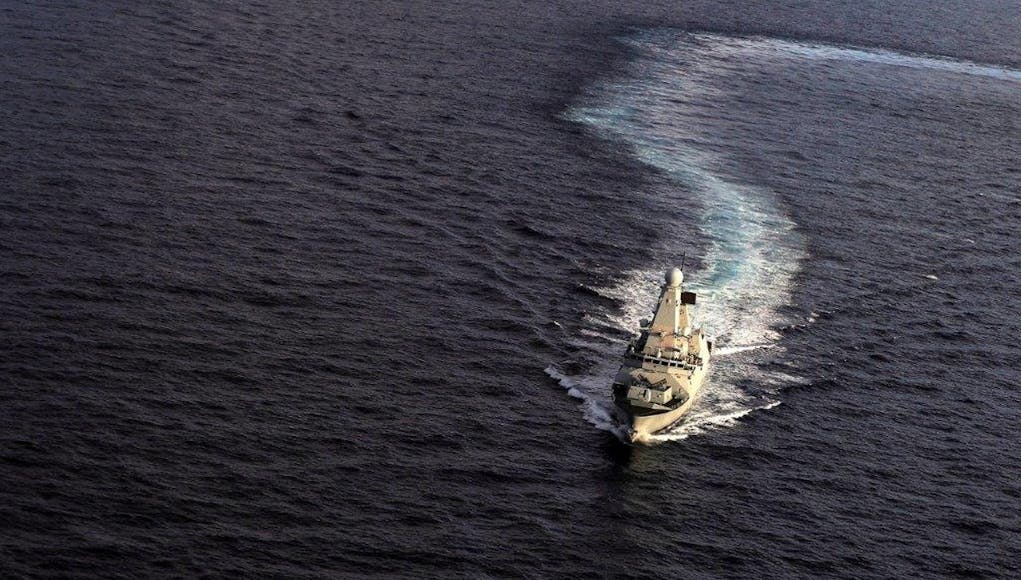


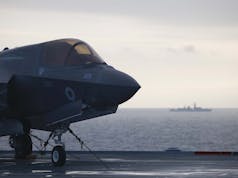
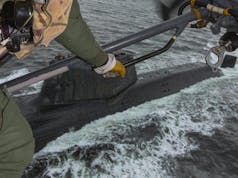

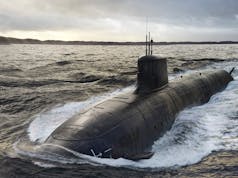


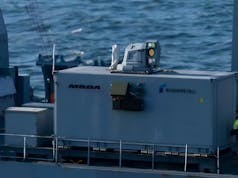


I’m curious, with Rolls-Royce creating electric aviation engines, could ships not implement a similar technology? Somehow use the passing water to generate or recharge batteries. This would perhaps give the ships indefinate power and thus limitless range. Something the QE carriers could greatly benefit from.
Not quite from my understanding. The Rolls royce electric aircraft is battery powered, A very good battery specifically designed to optimize charge and reduce weight but still a battery none the less and as such any electric ship would require the same. In principle it could be done however traveling through air and traveling through water are two very different things. Requires a lot more force to shift something through the ocean then it does to fly something in the air so would require batteries on a ship unheard of in size. Now some of this could be overcome with hull design but such different designs only tend to be used on specialized or certain ship types and not wifely used especially not commercially. For your more classical ship designs im not sure all electric would cut it. That being said if some how some one made a break through you should make sure damn quickly that you plan to modify or build new types of Supply ships that are able to recharge the batteries because said ships wont be able to recharge going through the water at least not get back as much charge as they require to move.
A few immediate thoughts:
The Navy has been introducing new technology to comply with waste disposal standards for a long time. Credit should be given for this, as I suspect it could have hidden behind crown exemption if it had chosen to.
Modern ships are increasingly all electric. We should be asking how generation from renewables can be designed in? How about a flight deck coating that has photo-voltaic properties? Perhaps not for landing spots, but for the rest of the expanse. Could the roll and pitch of the whole ship be utilised to capture wave energy? And of course for centuries warships were powered by the wind. Could a clever mast design also include wind turbines of some kind? Anything that generates power saves fuel, increasing range and endurance, so there is an operational upside too. Finally, can exhaust heat, not only from the engines, but from hotel systems, be recaptured and recycled to where its needed? Presumably this is already closely looked at for signature reduction, so this could be another area where green and blue go hand in hand.
Power from nuclear fusion (not fission) is where all the sensible money is going on clean energy for the medium to long term. Wouldn’t be surprised to see it replace the power source for the QE class as it should be a viable and suitable energy source with the next couple of decades. China are making great strides in this area. The UK should be seeding the research market with cash to encourage rapid development for economic purposes let alone the obvious defence benefits. Boris has mentioned it.
This is not a joke well it sort of is…but my cousin she is married to a nuclear physicist (she is really) and he told me some years ago that nuclear fusion was just around the corner to which I replied, really, and his response was yes and if you ask me in 50 years time you will get the same answer.
Excellent that just won me a small wager. I thought someone would make that very point!
I agree that there is much research to be done and there is nothing certain about it however we know the energy is there and there are a lot of people working on it so I’m giving it a 70% chance although I’m not committing to a time frame like your Nuclear Physicist.
If it works it will change everything in my view a little like the internal combustion engine. We will see!
Fluoropolymer resins tend to swell in sea water and any such coating would have to be easily removed and replaced, if you bond the Fluoropolymer to the hull you then have a very difficult task to remove it for replacement. The Fume risk is horrendous with these products. That said, it has good sound insulation properties especially in the high frequency range and it is also the most slippery man-made substance currently known. Very little if anything would stick to it ( For the uninitiated fluoro resins are more commonly known as Teflon, a trade name for DuPont and the major component in non-stick frying pans) it would almost certainly reduce drag, but it would increase the weight of the ship.
One very large downside is the cost of the material, its a very expensive material in its raw form and would need processing into large sheets, adding further cost. Lets not discuss the other issue, fluorospar which is the main ingredient is only currently mined in China and exported on a auction basis. There is a mine in Derbyshire but its been shut for years, mainly due to the dangers involved in extraction from the ground. Fluor resins are not the most environmentally sound product when its entire life cycle is considered.
Excess heat from the various ships systems could be passed over a thermopile to extract electrical energy from it, but thermopiles tend to be heavy if they are to produce useful amounts of power.
My thermopiles are also heavy.
You can get a cream for that ??
As I’ve said in the past the biggest investor in green tech research in the US and possibly the world is the US DOD. Going green as significant operational advantages and current fuel make you dependent on long sea lines of communication (SLOCs) that can be attacked and if you don’t have your own resources you are dependent on some very unstable parts of the world. That’s the first point.
Other point is that there is considerable movement in the civil arena towards and for green tech and solutions so I suspect the time will come when the military either goes green or has to pay for its’ own oil supply lines – as if defence isn’t already expensive enough! So going green in defence ahead of the curve could generate both military and economic benfits for a nation state. Depends on your risk appetite.
Also of interest to note is that the UK MoD is one of the biggest operator of trucks in the country and has the biggest fleet of such vehicles in the governement – more than the rest put together I think.
It is very important that we understand clearly what the objectives are and what we mean by ”green”. I am happy to see that, despite the current alarmism and mass hysteria in a majority of the media, government funded science lobby, and education system etc, there is clearly no link between CO2 levels, and the temperature of the earth. However of course everyone wants to have clean breathable air, safe clean water to drink, and also safe clean oceans. The use of tributyltin (TBTs) in anti-fouling was phased out after many years of use and replaced with paint systems as efficient in many ways with no corresponding impact on vessel performance. This was a great success and a model for future projects.
From a war fighting perspective however, we cannot limit the ability of our Navy in it’s efforts to defend our freedoms and way of life – just to be seen to be in tune with the alarmism above.
More interesting is the ability of Navies to become more self reliant without the need to undertake RAS so often or make port calls for the same reason. Any reduction in the amount of fuel required is a great benefit to the efficiency of prosecuting war.
Yeah… no. All the scientific data points towards Co2 emissions and global warming being intrinsically linked.
The issue with RAS is that it will always be an issue. Even ignoring the issue of fuel, ships will need to replenish food for the crew, ammunition etc.
Hi Steve,
Sure – don’t take my word for it but do do some research…a good start is:
https://www.youtube.com/user/TonyHeller1
https://www.youtube.com/watch?v=gLzcz_l391w
I have to agree with Steve R here. Current Global Warming/Climate Change is in the >95th percentile for being caused by human activity since the mid-20th century. Have a read: https://climate.nasa.gov/evidence/
It might be worth reminding ourselves that successful deterrents to war only carry a small carbon footprint when compared to war itself.